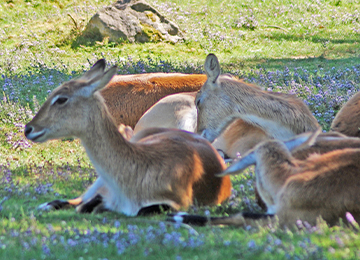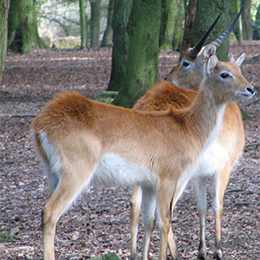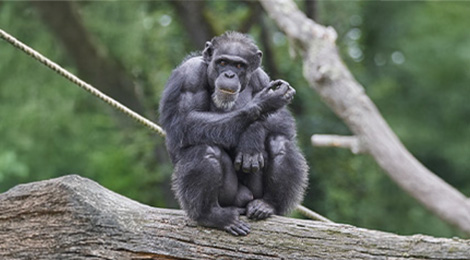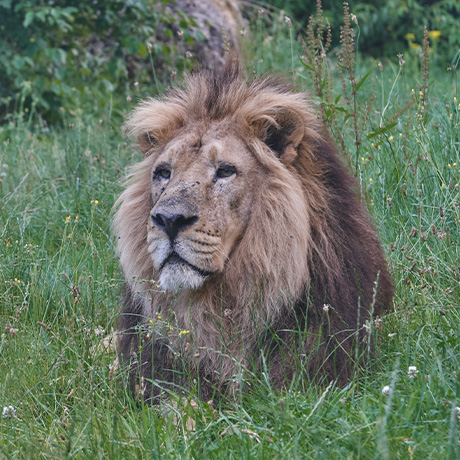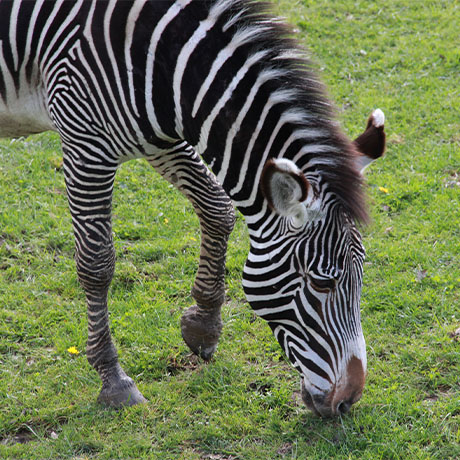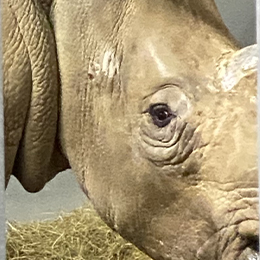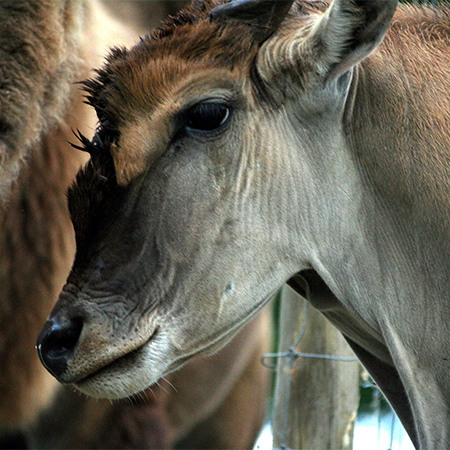A very good swimmer
The male lechwe cobe has rather thin lyre-shaped horns that can reach 90 cm and form a double curve.
During the mating season the cobes form herds of several individuals, the males will then engage in fights. Outside this period the young males form numerous herds.
Hydroelectric dams are the main causes of the decline of this species, they cause periods of drought as well as the absence of floods, essential to maintain the balance of the cobes. Even hunting and poaching are not so bad for them.
The cobes are perfectly adapted to aquatic life: their long hooves are pointed, they produce oily secretions in large quantities to coat their hairs which allow them to swim more easily. It is only to give birth or to rest that they seek a dry shore.
-
HabitatIt is found in southern Africa, mainly in floodplains and swampy areas.
-
Food
It feeds on aquatic plants and grasses.

The cobes swim with ease and endurance and can completely immerse themselves in case of danger, they only let out their nostrils.
A zoological reserve populated by Asian elephants, giraffes, lions, tigers, hippos, chimpanzees, gibbons, wolves, ostriches ... Animals evolving in their reconstituted natural environment, to discover as a family.
All animals
-
![]() Ostrich Discover animal
Ostrich Discover animal -
![]() Chimpanzee Discover animal
Chimpanzee Discover animal -
![]() Asiatic lion Discover animal
Asiatic lion Discover animal -
![Gros plan sur un zébre de Grévy qui broute de l'herbe]() Zebra of Grevy Discover animal
Zebra of Grevy Discover animal -
![Flamant du Chili debout dans l'eau au parc animalier Le PAL]() Chilean flamingo Discover animal
Chilean flamingo Discover animal -
![Calao terrestre de Leadbeater en plein vol au zoo Le PAL]() Southern ground hornbill Discover animal
Southern ground hornbill Discover animal -
![Gros plan sur la tête et l'œil du rhinocéros blanc au parc animalier Le PAL]() White rhinoceros Discover animal
White rhinoceros Discover animal -
![Grand et beau cerf du père David au bois majestueux au parc animalier Le PAL]() Father David's Deer Discover animal
Father David's Deer Discover animal -
![Gros plan sur un petit éland du Cap au parc animalier Le PAL en Auvergne]() Cape Eland Discover animal
Cape Eland Discover animal



